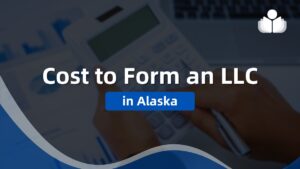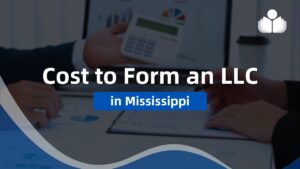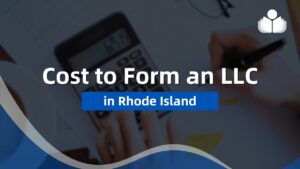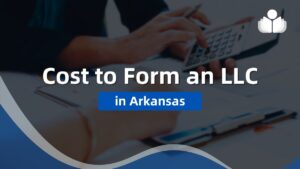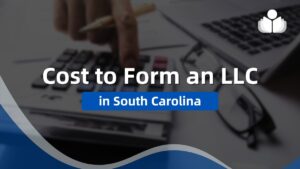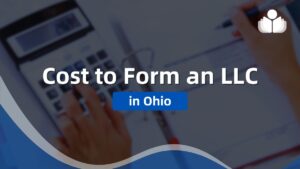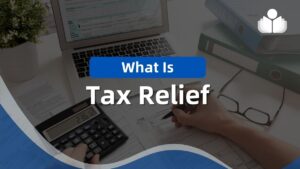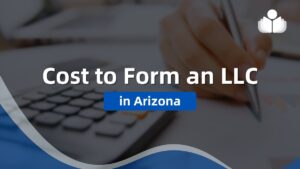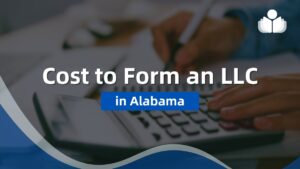© Copyright Carter McNamara, MBA, PhD, Authenticity Consulting, LLC.
Sections of This Topic Include
- Preparation for Conducting Needs Assessment
- Overall Purpose of Training Assessment and Analysis
- One Approach — Four Steps to Conducting a Needs Assessment
- Another Approach to Needs Assessment to Determine Your Overall Training Goals
- More Resources for Training Needs Assessment and Analysis
Also, consider
Related Library Topics
Learn More in the Library’s Blogs Related to Conducting Needs Assessments for Training
In addition to the articles on this current page, also see the following blogs that have posts related to Conducting Needs Assessments for Training. Scan down the blog’s page to see various posts. Also, see the section “Recent Blog Posts” in the sidebar of the blog or click on “Next” near the bottom of a post in the blog. The blog also links to numerous free related resources.
- Library’s Career Management Blog
- Library’s Human Resources Blog
- Library’s Leadership Blog
- Library’s Supervision Blog
- Library’s Training and Development Blog
Preparation for Conducting Needs Assessment
- The reader would benefit from first reviewing the information about formal and systematic training, especially the ADDIE model, at Formal Training Processes — Instructional Systems Design (ISD) and ADDIE.
- Also, note that there is a document, Complete Guidelines to Design Your Training Plan, that condenses the guidelines from the various topics about training plans to guide you in developing a training plan. That document also provides a Framework to Design Your Training Plan that you can use to document the various aspects of your plan.
Before you undertake the various phases of the ADDIE model of systematic planning, you might also get a quick grasp of the broader context of training plans. Consider the following topics in the Library.
- Designing Training (identifying learning objectives, methods to use, etc.)
- Methods — Remembering Some Basic Principles About Adult Learning
- Methods — Some Basic Mistakes to Avoid When Selecting Methods
- Methods — Building More Learning into the Training and Development Plan
- Various Ideas for Ways to Learn
Overall Purpose of Training Needs Assessment and Analysis
A training analysis is conducted ultimately to identify what areas of knowledge or behaviors training needs to accomplish with learners. The analysis considers what results the organization needs from the learner, and what knowledge and skills the learner presently has and usually concludes with identifying what knowledge and skills the learner must gain (the “performance gap”).
Usually, this phase also includes identifying when training should occur and who should attend as learners. Ideally, criteria are established for the final evaluation of training to conclude if training goals were met or not.
Depending on the resources and needs of the organization, a training analysis can range from a very detailed inventory of skills to a general review of performance results. The more complete the training analysis, the more likely that the employee’s training will ultimately contribute results to the organization.
Note that employees can require training for a variety of reasons, which usually fall into two categories:
1. Training to fill a “performance gap” as identified during the performance management process
2. Training to fill a “growth gap”, that is, to be promoted or be able to fill another open position in the organization
One Approach — Four Steps to Conducting a Needs Assessment
(This article was written by Leigh Dudley; copyright, Leigh Dudley.)
Step 1 — Perform a “Gap” Analysis
The first step is to check the actual performance of our organizations and our people against existing standards or to set new standards. There are two parts to this:
Current Situation
We must determine the current state of skills, knowledge, and abilities of our current and/or future employees. This analysis also should examine our organizational goals, climate, and internal and external constraints.
Desired or Necessary Situation
We must identify the desired or necessary conditions for organizational and personal success. This analysis focuses on the necessary job tasks/standards, as well as the skills, knowledge, and abilities needed to accomplish these successfully.
It is important that we identify the critical tasks necessary, and not just observe our current practices. We also must distinguish our actual needs from our perceived needs — our wants. The “gap” between the current and the necessary will identify our needs, purposes, and objectives.
What are we looking for? Here are some questions to ask to determine where training and development or even human resource development (HRD) may be useful in providing solutions:
- Problems or deficits. Are there problems in the organization that might be solved by training or other HRD activities?
- Impending change. Are there problems that do not currently exist but are likely due to changes, such as new processes and equipment, outside competition, and/or changes in staffing?
- Opportunities: Could we gain a competitive edge by taking advantage of new technologies, training programs consultants, or suppliers?
- Strengths: How can we take advantage of our organizational strengths, as opposed to reacting to our weaknesses? Are there opportunities to apply HRD to these areas?
- New directions: Could we take a proactive approach, applying HRD to move our organizations to new levels of performance? For example, could team building and related activities help improve our productivity?
- Mandated training: Are there internal or external forces dictating that training and/or organization development will take place? Are there policies or management decisions that might dictate the implementation of some programs? Are there governmental mandates to which we must comply?
Step 2 — Identify Priorities and Importance
The first step should have produced a list of needs for training and development, career development, organization development, and/or other interventions. Now we must examine these in view of their importance to our organizational goals, realities, and constraints. We must determine if the identified needs are real if they are worth addressing, and specify their importance and urgency in view of our organizational needs and requirements. For example:
- Cost-effectiveness: How does the cost of the problem compare to the cost of implementing a solution? In other words, we perform a cost-benefit analysis.
- Legal mandates: Are there laws requiring a solution? (For example; safety or regulatory compliance.)
- Executive pressure: Does top management expect a solution?
- Population: Are many people or key people involved?
- Customers: What influence is generated by customer specifications and expectations?
If some of our needs are of relatively low importance, then we would do better to devote our energies to addressing other human performance problems with greater impact and greater value.
Step 3 — Identify Causes of Performance Problems and/or Opportunities
Now that we have prioritized and focused on critical organizational and personal needs, we will next identify specific problem areas and opportunities in our organization. We must know what our performance requirements are if appropriate solutions are to be applied. We should ask two questions for every identified need:
- Are our people doing their jobs effectively?
- Do they know how to do their jobs?
This will require detailed investigation and analysis of our people, their jobs, and our organizations — both for the current situation and in preparation for the future.
Step 4 – Identify Possible Solutions and Growth Opportunities
If people are doing their jobs effectively, then perhaps we should leave well enough alone. (“If it ain’t broke, don’t fix it.”) However, some training and/or other interventions might be called for if it’s important
enough to move our people and their performance in new directions.
But if our people ARE NOT doing their jobs effectively, then training may be the solution if there is indeed a knowledge problem.
Organizational development activities may provide solutions when the problem is not based on a lack of knowledge and is primarily associated with systematic change. These interventions might include strategic planning, organization restructuring, performance management, and/or effective team building.
(Consider writing your training goals in the Framework to Design Your Training Plan.)
Another Approach to Needs Assessment to Determine Your Overall Goals in Training
The purpose of the needs assessment is to help you determine what you need to learn to, for example, qualify for a certain job, overcome a performance problem, or achieve a goal in your career development plan. Learners are often better off working towards at most two to four goals at a time.
- Optional: You may want to re-review some of the following information:
- Are there any timelines that you should consider in your plan?
Do you have to accomplish any certain areas of knowledge or skills by a certain time? If so, this may influence your choice of learning objectives and learning activities to achieve the objectives. (Record your timelines in the Framework to Design Your Training Plan.) - Are you pursuing training and development in order to address a performance gap?
A performance gap is usually indicated by the performance appraisal process. The performance appraisal document should already include a careful description of the areas of knowledge and skills that you must learn in order to improve your performance. To understand performance gaps, see
Employee Performance Management - Or, is your plan to address a growth gap?
If so, carefully identify what areas of knowledge and skills are needed to reach your goals in your career. Consider referencing job descriptions, lists of competencies or even networking with others already in the positions that you want to reach in the near future. The following links might help you. Job Descriptions | Competencies | Networking | Career Planning | Job Searching - Or, is your plan to address an opportunity gap?
If so, carefully identify what areas of knowledge and skills are needed to perform the job or role that soon might be available to you. Again, consider job descriptions, lists of competencies or even interviewing someone already in the job or role that may soon be available to you. The following links might help you.
Job Descriptions | Competencies | Networking | Career Planning | Job Searching - Get feedback from others
Ask for advice from friends, peers, supervisors, and others. They can be a real treasure for real-world feedback about you! For example, you (and your supervisor, if applicable) could work together to conduct a SWOT (an acronym) analysis, including identifying your strengths, weaknesses, opportunities, and any threats to reaching your desired goals. - Should you conduct a self-assessment?
For example, you (and your supervisor, if applicable) could work together to conduct a SWOT (an acronym) analysis, including identifying your strengths, weaknesses, opportunities, and any threats to reaching your desired goals. There are also a wide variety of self-assessments available at Self-Assessments (numerous self-assessments) - Is a list of competencies, job descriptions, or job analysis available to help you identify your training and development goals?
A competencies list is a list of the abilities needed to carry out a certain role. The list can be very useful to you when identifying your learning objectives in your training and development plan. See the information in the sections
Job Analysis | Job Description | Competencies - Begin thinking about how much money you will need to fund your plan.
You might need money, e.g., to pay trainers, obtain facilities and materials for training methods, pay wages or salaries for employees during attendance to training events, etc. Begin recording your expected expenses in the “Budget” section of the Framework to Design Your Training Plan. - Identify your training goals.
By now, you should have a strong sense of what your training goals are after having considered each of the above steps. It’s important that goals be designed and worded to be “SMARTER” (an acronym), that is, specific, measurable, acceptable to you, realistic to achieve, time-bound with a deadline, extending your capabilities, and rewarding to you. (For more guidance, see Goals and Objectives Should Be SMARTER.) Write down your training goals in the Framework to Design Your Training Plan.
(Consider writing your training goals in the Framework to Design Your Training Plan.)
More Resources for Training Needs Assessment and Analysis
- Overview of training analysis (includes comprehensive, detailed overview)
- Steps to Designing a Needs Assessment
- Needs Assessment
- Methods of Strategic/Organizational Evaluation and Diagnosis
- How to Conduct a Training Needs Analysis (TNA)
- Identifying Risk Management Training Requirements
- What Makes a Great Pre-Employment Assessment?
- Analysis
- The Training Needs Assessment Disconnect
- Trainers: Between the Rock and the Hard Place
- Four Reasons for a Needs Assessment Survey Plus Two
- How to Succeed with Outcome-Based Training
- Selecting the Right Trainer
- Ignore the Bull and Get the Training Results
- The Best Training Assessments Are a Matter of Perspective
- Needs Assessment: Don’t Blow It, Motivate It
- What Will Training Look Like in 2050?
- Depends on “Whose Life It Is Anyway” and Trainers Can Help
- Smart Money Training
- Employees hate/love go to participate in training
Go to the main Training and Development page
For the Category of Training and Development:
To round out your knowledge of this Library topic, you may want to review some related topics, available from the link below. Each of the related topics includes free, online resources.
Also, scan the Recommended Books listed below. They have been selected for their relevance and highly practical nature.
 Sections of this topic
Sections of this topic




